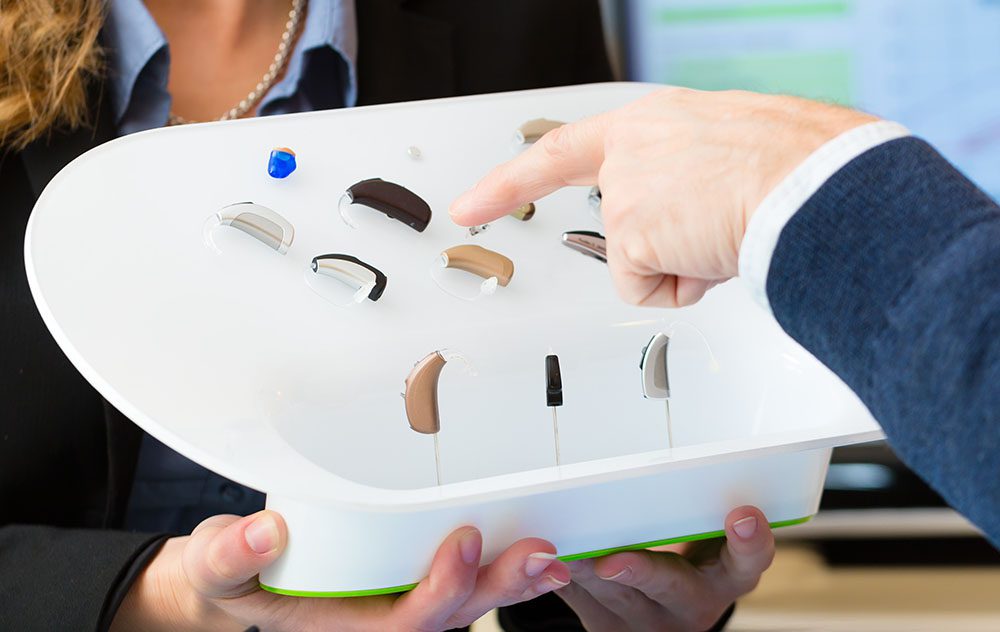
Various devices are available to amplify hearing and improve communication. However, these devices aren’t the same; they have different functions and serve different consumers. Over-the-counter hearing aids, personal sound amplification products (PSAP) and other devices are common among people seeking to improve their hearing. So, what differentiates these devices? This article sheds light on these items, their uniqueness and their purposes to help you make a more informed decision.
What are Over-the-Counter (OTC) Hearing Aids?
OTC hearing aids are new types of hearing devices consumers can purchase without consulting an audiologist. These hearing aids help people with mild or moderate hearing loss. Like their traditional counterparts, OTC hearing aids amplify sounds to enable the wearer to hear various sounds. This way, they can communicate effectively, participate in various activities and improve their quality of life.
The Food and Drug Administration (FDA) Reauthorization Act of 2017 allowed the FDA to create OTC hearing aids for people who experience self-perceived mild or moderate hearing loss but can’t schedule a visit with their audiologists for various reasons.
What are Prescription Hearing Aids?
The audiologist recommends prescription hearing aids after conducting hearing tests to diagnose the degree of hearing loss. These hearing aids are the best options for people experiencing mild-to-profound hearing loss, as the audiologist can conduct hearing aid fitting to ensure that they are best suited to your hearing needs. The three main styles of hearing aids include:
- Behind the ear (BTE)
- In the ear (ITE)
- In the canal (ITC)
What are Personal Sound Amplification Products (PSAP)?
It’s not uncommon as PSAPs to be marketed as hearing aids, although this is far from the truth. Indeed, these devices amplify sounds, but not how hearing aids operate. People with good hearing mainly use PSAPs to help them hear better in certain situations or areas, such as when they are listening to the TV or when in a noisy environment.
What is the Difference Between These Hearing Devices?
Understanding these devices’ differences is essential to ensure you get the right option. This way, you can avoid wasting your resources on inefficient devices. Therefore, here are some differences worth noting.
Product Class
OTC and prescription hearing aids are intended to compensate for hearing loss and enable those wearing them to function effectively in any given situation. Therefore, they are medical products regulated by the FDA to ensure that they don’t harm the wearer. However, OTC hearing aids tackle self-perceived mild and moderate hearing loss and don’t require an audiologist to purchase one. Prescription hearing aids are more effective for mild-to-profound hearing loss, and the audiologist conducts a series of tests before prescribing the most suitable option.
On the other hand, PSAPs aren’t intended to address hearing loss; instead, they only amplify sounds in certain areas. Hunters and bird watchers can benefit from using these devices. Moreover, you can leverage them if you want to watch TV without disturbing others. Since they aren’t FDA-regulated, you can expect the quality to vary among brands.
Style of Amplification
Hearing aids leverage filters and broadband technology to amplify the sounds you need to hear while reducing feedback and background noise. This ensures you aren’t overwhelmed by unwanted sounds that could further compromise your hearing.
However, PSAPs don’t work that way. They don’t have filters or technology to selectively amplify certain sounds. You will likely hear everything around you once your PSAPs are activated. This, in turn, can cause your ears to be overwhelmed, leading to ear damage.
Features and Fit
Most hearing aids aren’t one-size-fits-all. Prescription hearing aids can be programmed to address your specific listening needs and hearing loss. Moreover, they have tinnitus control, streaming capabilities, directional microphones and other advanced features to ensure that the wearer is comfortable.
On the other hand, PSAPs only have an amplifier, a microphone and a mini-loudspeaker Likewise, they aren’t custom-made; they have the same standard, irrespective of your specific hearing needs.
Who Can Wear Them
Regarding whom can use them, OTC and prescription hearing aids differ. For starters, prescription devices can be used by anyone experiencing hearing loss, irrespective of age. However, OTC devices are strictly for adults aged 18 and above, as stated by the FDA.
PSAPs can also be used by anyone who wishes to amplify the sounds around them. Therefore, age doesn’t restrict who should or shouldn’t use them.
Which Option Is Right for You?
Hearing aids may seem similar, although they aren’t. If you aren’t sure what option is better, a visit to an audiologist is in order. You can visit Alliance Center for Hearing or call us today at 701-751-6232 for more details.



